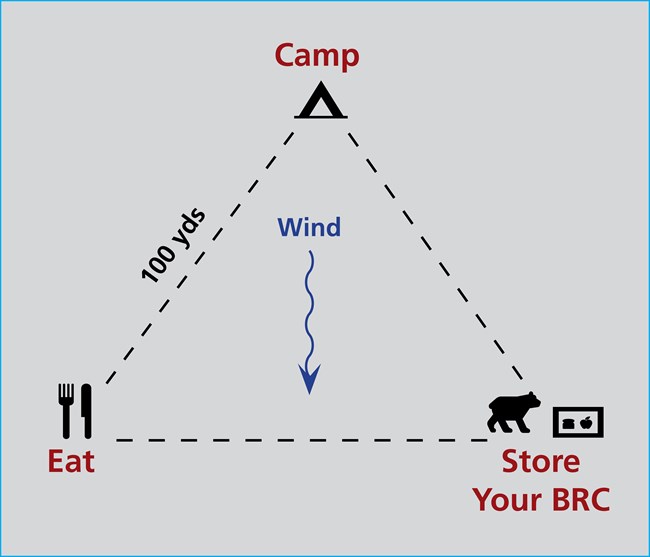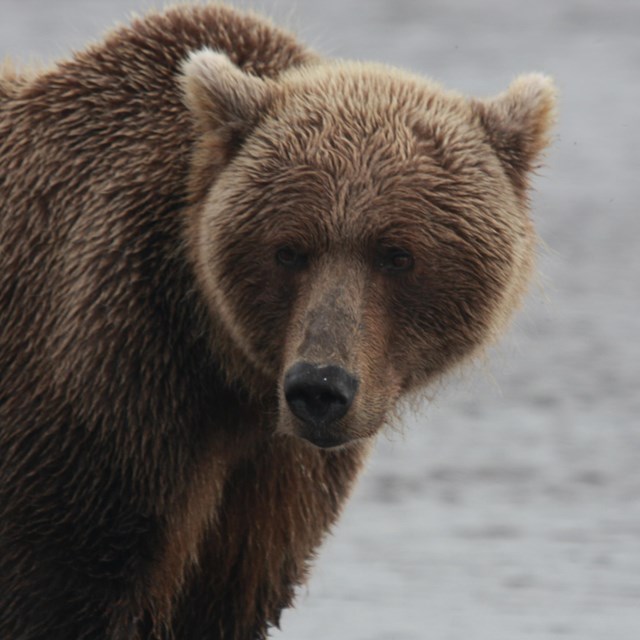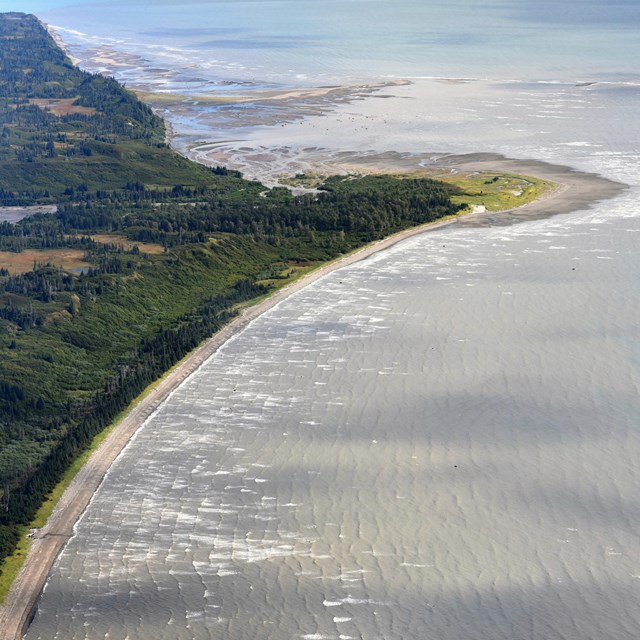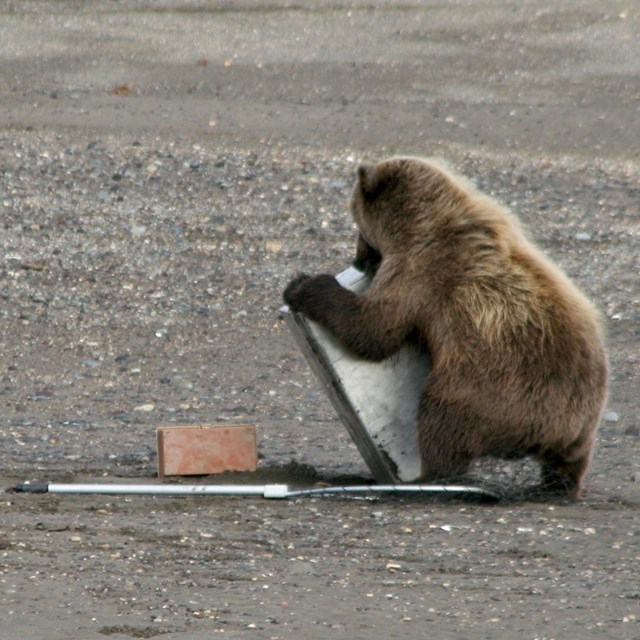|
The nutrient-rich vegetation, salmon-packed streams, and clamming potential of the park's Cook Inlet coast make it prime habitat for a dense concentration of brown bears. The high bear population is what attracts many visitors to places like Silver Salmon Creek and Chinitna Bay. If you plan to camp along these sedge meadows or beaches, come prepared for likely up-close bear encounters. Campers should be extra vigilant with food storage and plan for safe camping in bear country. 
NPS / Megan Richotte Cook Inlet Camping Essentials
A note from the Superintendent's Compendium Page 4 2.10(d)(4): “Bear Resistant Fencing From May 1st to November 1st of each year, use of functional and active bear resistant electrical fencing is required when camping within ½ mile of the Cook Inlet Coastline of Lake Clark National Park. The intent of these designations is to prevent bears and other wildlife from obtaining and habituating to food and garbage, thus protecting wildlife and park visitors alike. We strongly recommend that dishes and cooking equipment be securely stored; but clean and odor free items are not required to be stored in secure containers. We also recommend using BRC’s in all areas of the park, but do not require it. Ice chests and coolers, tents, dry bags or stuff sacks, plastic packing boxes (Totes, Action Packers, etc) and unmodified kayaks are not generally approved as BRC. The park offers bear resistant containers for temporary use to the public. The containers are free of charge and can be picked up at the park’s visitor center in Port Alsworth.”

NPS / Ken Ilgunas 
At Your Camp
Other Considerations
Know Before You Go
Backcountry Pro-TipsBackpacking in Alaska |
Last updated: July 31, 2020



